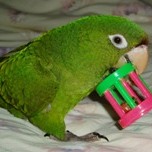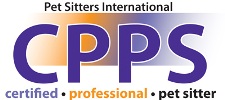Top 5 Pet First Aid Emergencies
Provided by "Pet Tech training"
1 Open Wound:
Open Wounds Include bites, cuts, lacerations and abrasions. First aid actions include muzzling, restraint, controlling bleeding and treating for shock.
Depending on the severity of the injury, the pet may need veterinary care, including stitches and medication to treat possible infection. X-rays could
be warranted if any sudden blunt trauma was involved. This is a common problem and keeping a fanny pack pet first aid kit at hand is a necessity for
every pet owner and pet care professional. Note: Keep your vet's number posted on the refrigerator!
2 Choking:
Dogs are at greater risk of choking than cats. Cats don’t usually choke because they are such finicky eaters. The greatest dangers to cats are strings,
ribbons and tinsel that they ingest causing an obstruction in the intestines. Items dogs usually choke on are handballs, tennis balls, chew toys and
rawhides. The pet Industry is bigger than the human toy industry and less regulated. Therefore, it is important to choose a pet toy that can stand up
to the strong jaws and sharp teeth of our pets. Actions for survival for choking depend on which of the following three situations of choking they are
experiencing. Note: It may be your pet’s favorite toy but if it is a toy that calls for supervision then don’t store it in the toy box! Only bring
it out when you can supervise play!
Conscious Choking (I): is where the pet is conscious and they CAN cough and/or gag. If the pet can cough and/or gag, they have a better
chance of getting it out themselves because they can inhale and force the object out. As the pet parent, you need to monitor the pet in case they move
into the next stage and contact your nearest Emergency Animal Hospital.
Conscious Choking (II): is where the pet is conscious and they CANNOT cough, CANNOT gag or you hear stridor. Stridor is a high-pitched s
ound caused by the wind “whistling” around the object in the airway. As a pet parent, here is where you need to take immediate action. You will need
to assist the pet in doing a cough that they cannot do themselves. Pet Tech does not teach doing thrusts on the soft tissue/abdomen. Rather, we teach
chest thrusts, much like a bellows for a fireplace, to force the object up. No Heimlich thrusts you could cause more damage. As with all skills, they may
not be enough and the pet can get worse. If the object does not come up, then the pet could go unconscious.
Unconscious Choking: is where the pet is either witnessed (as continuing from the above scenario) or found unconscious. If the pet were found
unconscious, you would determine they went unconscious because of choking by doing the Primary Pet Assessment. Again this skill is best learned in a class.
Actions for survival are to get an open airway. The object coming up or you blowing the object down can achieve an open airway.
3 Insect Bites, Stings & Allergic Reactions
Ants, bees, hornets, wasps, and spiders. Dogs and cats are inquisitive and get into colonies or holes where these insects live. The biggest danger is a severe
allergic reaction. Unless you observe the pet being stung or bitten, you may not be immediately aware of what is going on. Your first sign may be incessant
licking and scratching and then upon investigation you find localized swelling, redness and pain at the injury site. Actions for Survival include
immobilization/reducing the pet’s activity to keep them from spreading the toxin further. Treat symptoms as they present and keep the pet comfortable, which
is also code for under control. Before this happens is the time to consult with your vet on what the proper dosage of antihistamine would be for your pet.
Pet Tech recommends that you find “Benadryl” (diphenhydramine) in the gel caps in the blister packaging (the generic version of this is fine too). Then tape
a safety pin on the back with the dosage for your pet (that you got from your vet) written on the tape too. Then carry that in your pet first aid kit.
To administer, just poke a hole in the gel cap and squeeze it into the pet’s mouth.
4 Extreme Temperatures
Heat Injuries - Includes heatstroke and burns of the skin and airway. Heatstroke can be caused by pets being in confined spaces with little or no
ventilation or water (think car), warm weather with high humidity and stress can also be factors. Dogs cool themselves by panting, passing cooler air over
their gums and tongue. Short-nosed breeds (cats, Pekinese, Boxers, Pugs, etc.) are more susceptible to overheating as their “radiator” (mouth and gums) are
too small for their body size.
Signs of heatstroke - Include uncontrollable panting, foaming at the mouth, rapid heart rate, vomiting, lethargy, the tongue initially bright red and
a capillary refill longer than 2 seconds. Actions for Survival: include restraining and muzzling, bathing or hosing down with cool water, treating for shock,
monitoring the temperature and contacting/transporting to the nearest pet emergency hospital.
Cold Injuries - Frostnip is a first degree (superficial) cold injury that does not cause tissue damage. Frostbite is third degree (deep) cold injury
causing localized tissue damage. Areas most commonly affected are the ears, paws, scrotum and tail. Cold injuries are caused by extreme and/or prolonged
exposure to low temperatures. Signs include swollen, red, painful, hard and/or pale skin. In later stages, the pet may lose skin and hair in the affected
area. Prevention is best. Keep the pet indoors during extreme temperatures and if they do go outside, make sure you monitor the pet and do the Snout-to-Tail
Assessment when you bring them inside to make sure there aren’t any ice crystals, snow etc. in the pads, paws and genitals.
Actions for Survival include: Frost nip parts should be warmed slowly with wet warm towels. Do not squeeze or rub the affected area as this will be
extremely painful for the pet. Frostbite requires immediate attention by a Veterinarian or Emergency Animal Hospital to prevent further pain, ward off
infection and to assess possible permanent tissue damage. Keep body parts frozen during transport.
5 Snakebites
Snakebites are very dirty wounds. Whether the bite is poisonous or non-poisonous, the pet needs wound care and antibiotic treatment. Signs include 1-2 puncture
wounds, severe pain, swelling and bruising. If the snake is poisonous, then immediate Actions for Survival include restraint, muzzling, treat for shock and
transportation to the nearest animal hospital that has antivenin. If you live in a snake-infested area, then you may want to have a conversation with your vet
on treatment for snakebite with antivenin.
Note: If you know that snakes could be a problem in your area please consult your vet before an accident happens. A snake bite could cost $1000’s!
Your pet may need 3 vials of antivenin, a stay in the hospital and further treatment. Also note that spring is snakebite season because of baby snakes which
tend to travel in groups and produce multi-bites!



